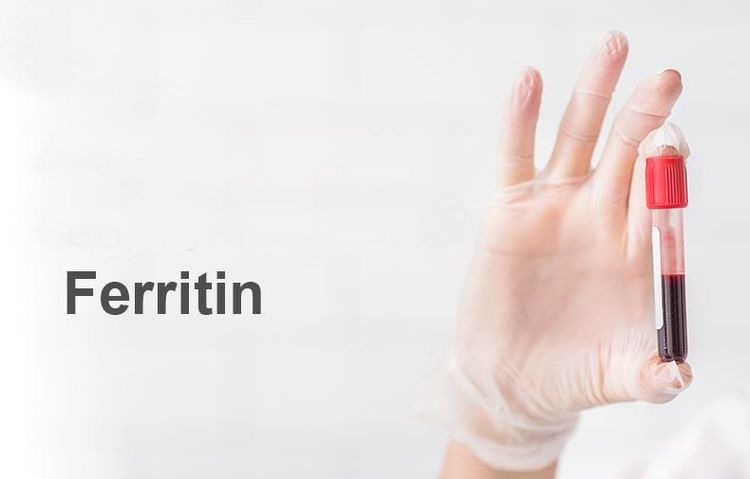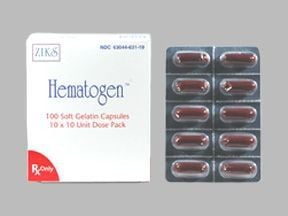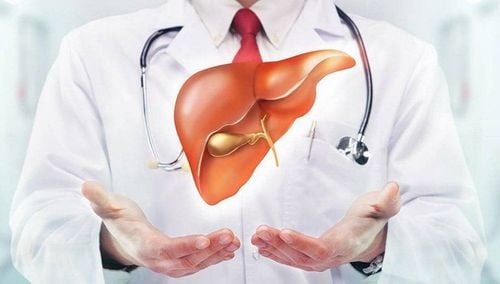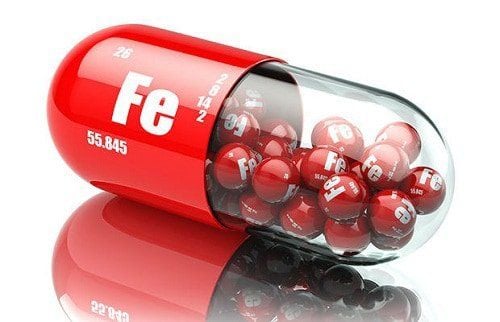This is an automatically translated article.
People with iron deficiency anemia often have symptoms such as fatigue, dizziness, lightheadedness, headaches, difficulty concentrating, pale skin... This condition, if prolonged, can affect health and work. work and life. Therefore, the disease needs to be diagnosed and detected early.
Iron plays an important role in the synthesis of hemoglobin in red blood cells and the transport of oxygen in the blood throughout the tissue cells. When old red blood cells are destroyed and released, 90-95% of the iron is used and the rest is excreted. Through eating, the body regains the lost iron.
1. Overview of iron deficiency anemia
Iron deficiency anemia is a condition in which the body does not have enough iron to serve the synthesis of hemoglobin or make red blood cells. When the amount of hemoglobin is too low or the red blood cells are small, hypochromia reduces the ability of the body's tissues to carry oxygen.
There are many causes of iron deficiency anemia and are classified into the following main groups:
Not meeting the body's iron needs: Not eating enough nutrients or the elderly, patients lying down for a long time, coma , eating poorly...; The body's need to use iron increases: This condition is common in premature babies, infants, girls at puberty or women who are pregnant and breastfeeding; The body's reduced ability to absorb iron: Some diseases in the digestive system such as gastritis, gastric and intestinal surgery or digestive disorders, prolonged absorption disorders; Blood loss: Acute and chronic blood loss is a common cause of iron deficiency anemia, common in women with menstrual disorders, uterine fibroids, gastrointestinal bleeding; Other causes: Genetic mutations cause disorders of iron metabolism. People with iron deficiency anemia often have symptoms such as fatigue, dizziness, lightheadedness, headache, difficulty concentrating, pale skin, brittle hair or nails, shortness of breath, pain in the chest (especially when TB is active). strenuous activity and exertion), heart palpitations. This condition, if prolonged, can affect health, work and life. Anemia in pregnant women will affect fetal development. Therefore, the disease needs to be diagnosed and detected early.

Thiếu máu thiếu sắt khiến người bệnh gặp tình trạng chóng mặt, hoa mắt
2. Indicated iron deficiency anemia tests
Blood tests are the basic tools for diagnosing iron deficiency anemia, including the following tests:
2.1. Complete blood count Test Peripheral blood cell analysis or complete blood count test is a simple and basic test that allows the identification of components in the blood, as a basis for searching cause of anemia. Iron deficiency anemia will have the following test results:
Hemoglobin - Hemoglobin (HGB): Decreased; Red blood cell count (RBC): Decreased; Red blood cell volume, hematocrit (CBC): Decreased; Mean erythrocyte volume (MCV): Decreased; Mean erythrocyte hemoglobin (MCH): Decreased; Peripheral blood smear: Small red blood cells and hypochromic; The percentage of reticulocytes decreases depending on the degree of anemia. In the early stages of iron deficiency anemia, MCV and MCH values are normal but may drop low, meaning that red blood cells are smaller and carry less hemoglobin.
2.2 Iron deficiency tests Iron deficiency tests are very important and there are many types of tests, including:
Serum iron : Normal values in men are between 75 -150 μg/dL (equivalent to 13 - 27 μmol/L) and 60 - 140 μg/dL in women (equivalent to 11 - 25 μmol/L). This number measures the amount of iron circulating in the blood and may depend on diet, taking oral supplements. Diagnose iron-deficiency anemia or certain chronic diseases when serum iron is low. Iron overload syndrome or hemolysis increases serum iron. Total iron binding capacity (Transferrin or TIBC): Normal values are in the range of 250 - 450 μg/dL (equivalent to 45 - 81 μmol/L). This index measures the protein's ability to transport iron in the blood to red blood cells or storage organs. Transferrin Saturation (TSAT): This is calculated by dividing serum iron by total iron-binding capacity (TIBC). Serum Ferritin: Normal values are in the range of 30 - 300 ng/mL (mean is 88 ng/ml in men and 49 ng/ml in women. Serum ferritin <12 ng/mL is a specific indicator. However, it should be noted that this value can increase up to 100 ng/mL in cases such as hepatitis, gastrointestinal neoplasms, Hodgkin lymphoma and tumors, etc. but it is still possible to be iron deficient.
When serum iron, Transferrin saturation (TSAT), Ferritin are lower than normal values and total iron-binding capacity (TIBC) is higher allowing the diagnosis of iron-deficiency anemia. Among them, TSAT and Ferritin are the two most useful tests.
In addition to the methods mentioned above, bone marrow testing is also used and this is the characteristic criterion for the reduction of red blood cell production due to iron deficiency.

Ferritin huyết thanh là một trong các xét nghiệm thiếu máu thiếu sắt
3. What to do when you have iron deficiency anemia?
Iron-deficiency anemia should limit blood transfusion, except in cases of severe anemia and need to have a decompensated transfusion. To treat this condition, your doctor may prescribe some iron supplements in oral form. The duration of use is about 6-12 months and it is necessary to supplement with vitamin C at the same time to increase iron absorption.
Take iron supplements in the form of tablets that need to be taken before eating to increase absorption, can be used during meals if stomach irritation. For intravenous iron supplementation, it should be done at specialized medical facilities to ensure.
Iron deficiency anemia needs to be diagnosed and treated based on the cause to limit recurrent iron deficiency. To prevent iron-deficiency anemia, it is necessary to pay attention to an iron-rich diet combined with foods rich in vitamin C to increase iron absorption. Especially pregnant women need iron supplements during pregnancy. Do not drink coffee or tea after eating, because it will reduce the body's ability to absorb iron.
When there are signs of suspected iron deficiency anemia, patients need to go to medical facilities to be examined, diagnosed to determine the cause and treat.
Currently, the Department of Hematology (Blood Complete Blood Test) - Vinmec International General Hospital is one of the leading prestigious addresses in the country, trusted by a large number of patients for examination and treatment. sick. Thanks to the use of modern machines and equipment to examine and analyze blood, it provides accurate information about red blood cells, white blood cells, platelets, hemoglobin,... Overall assessment of the health status of the person being tested, early detection of the disease and suggestions for timely treatment. In particular, with a space designed according to 5-star hotel standards, Vinmec guarantees to bring patients the most comfort, friendliness and peace of mind when visiting and receiving treatment at the hospital.
Please dial HOTLINE for more information or register for an appointment HERE. Download MyVinmec app to make appointments faster and to manage your bookings easily.













